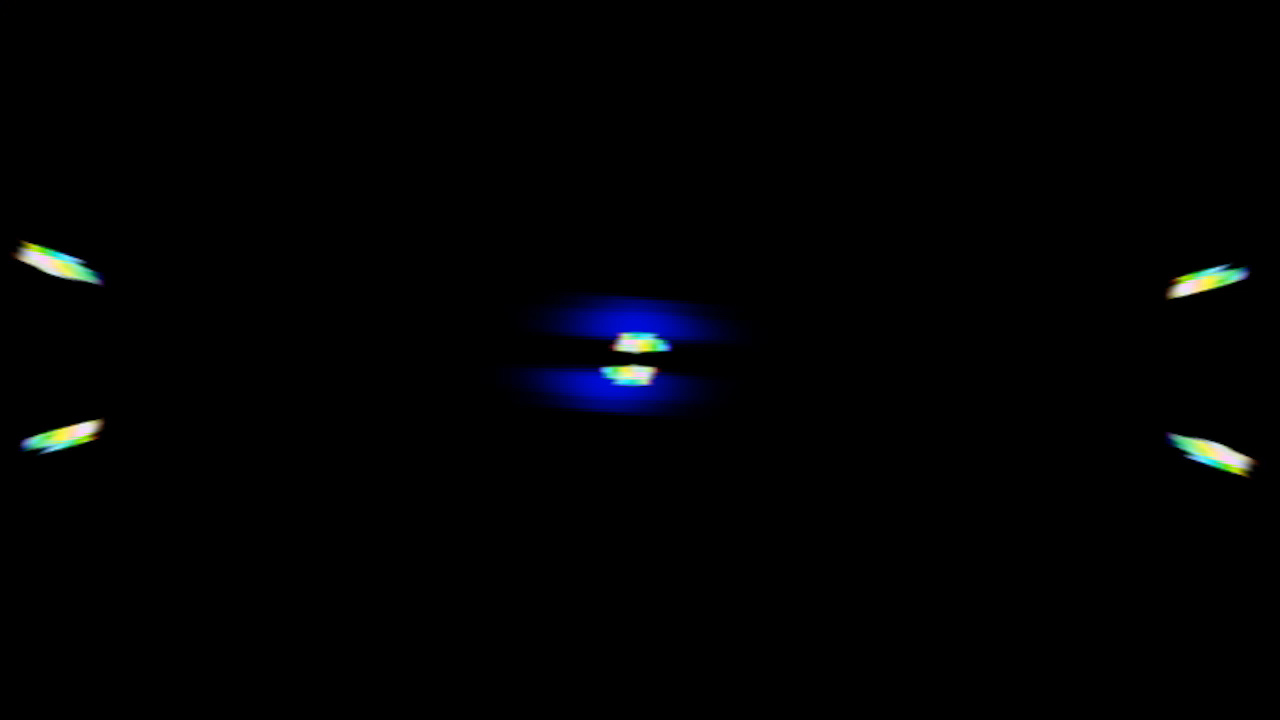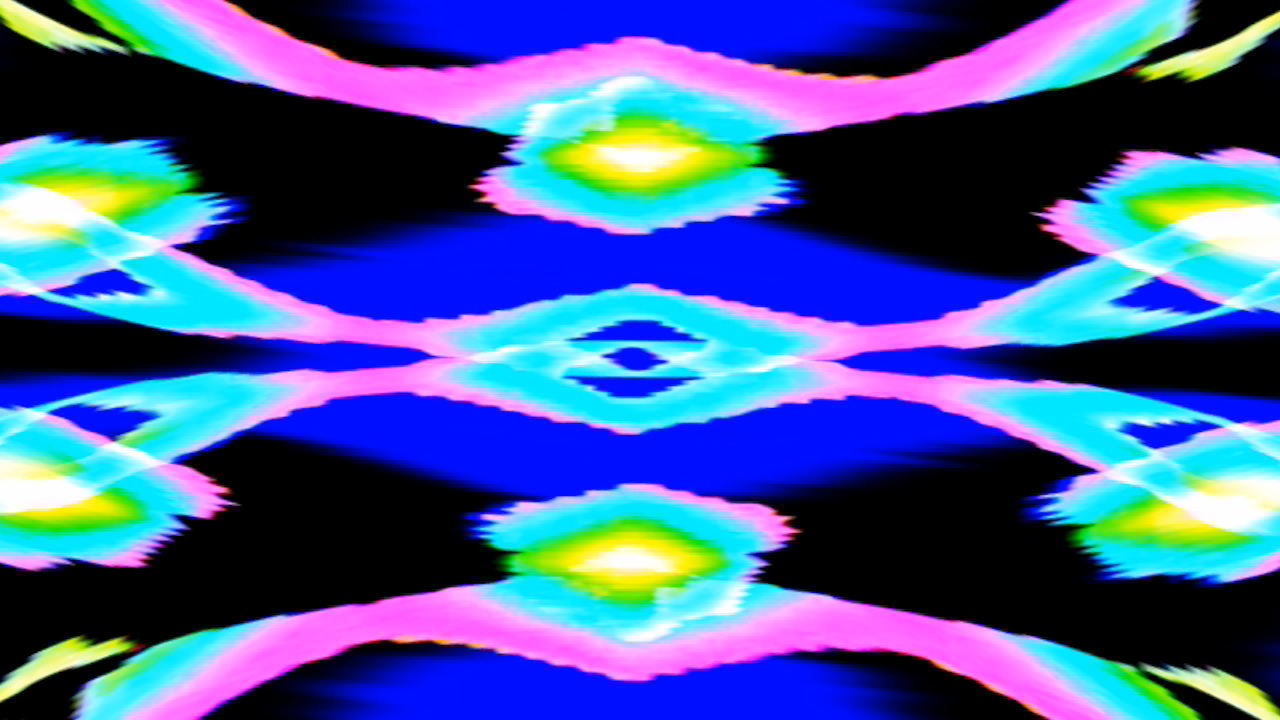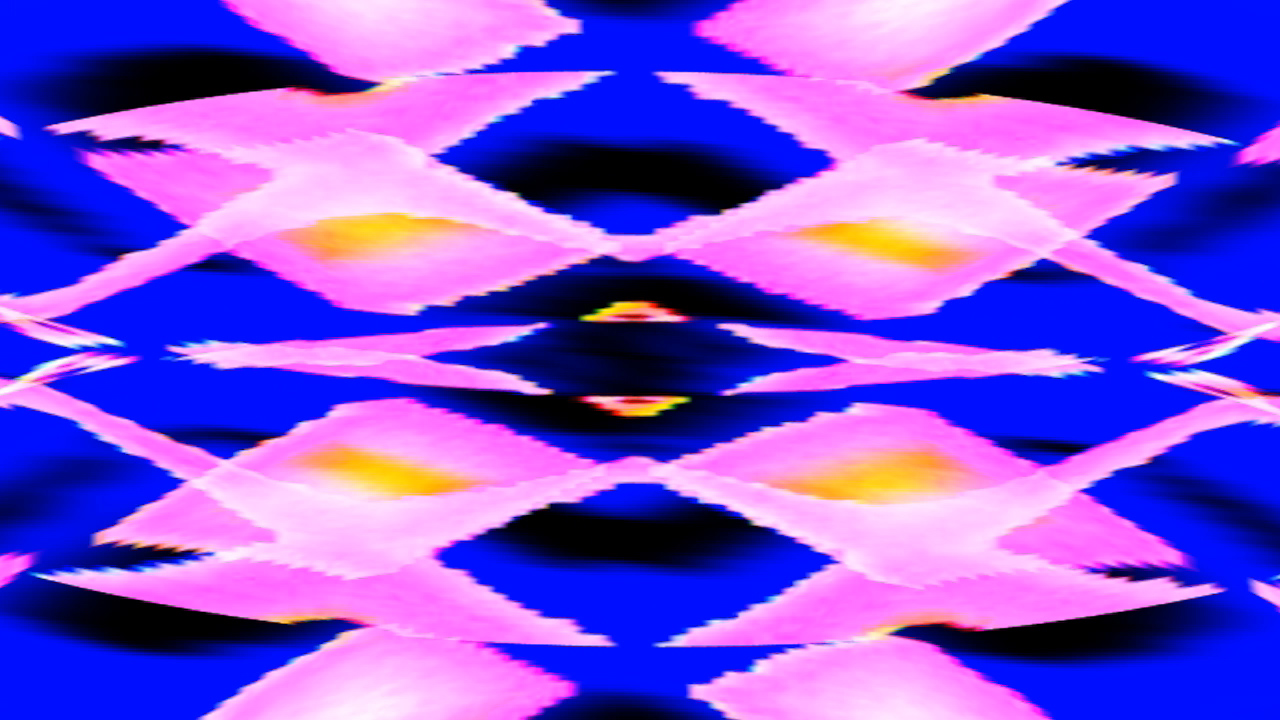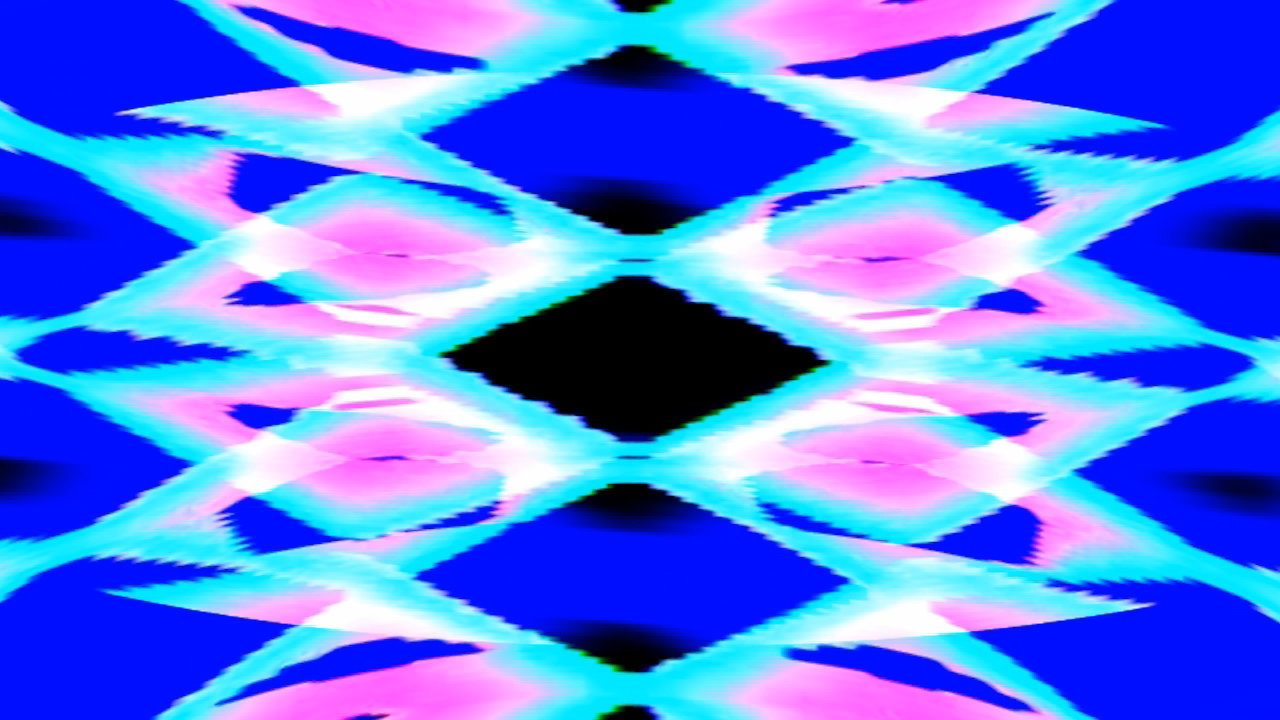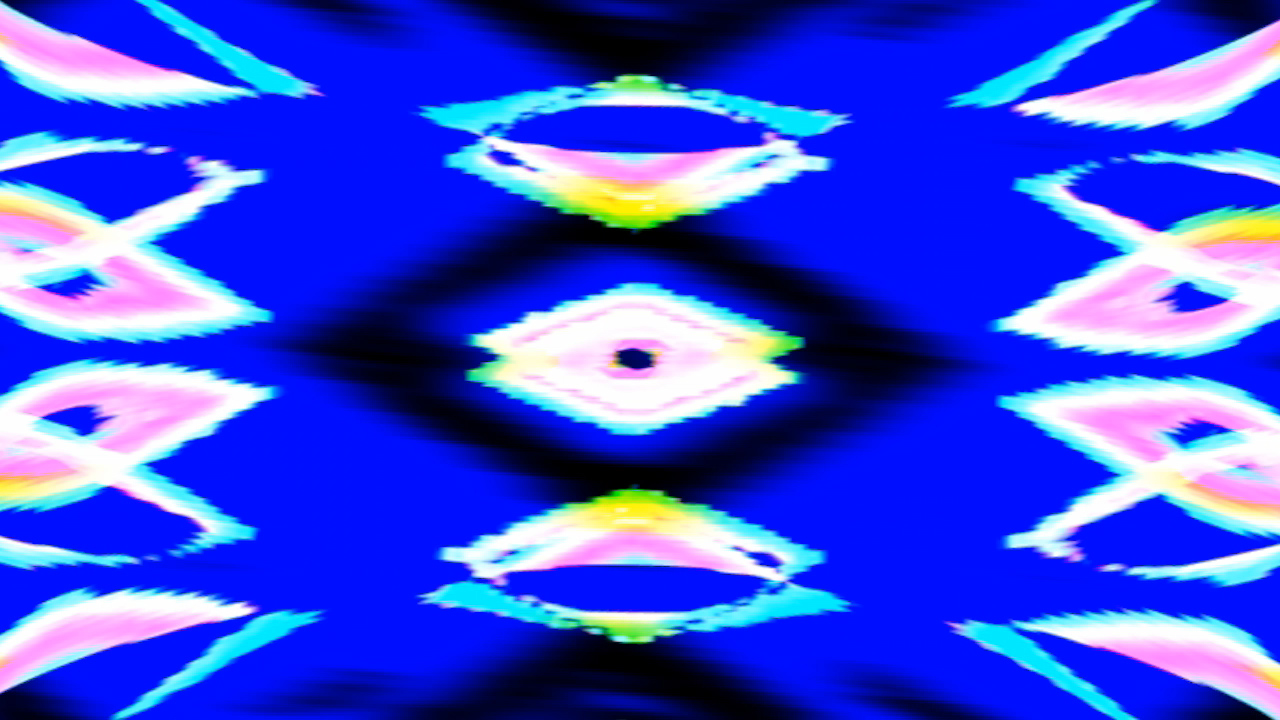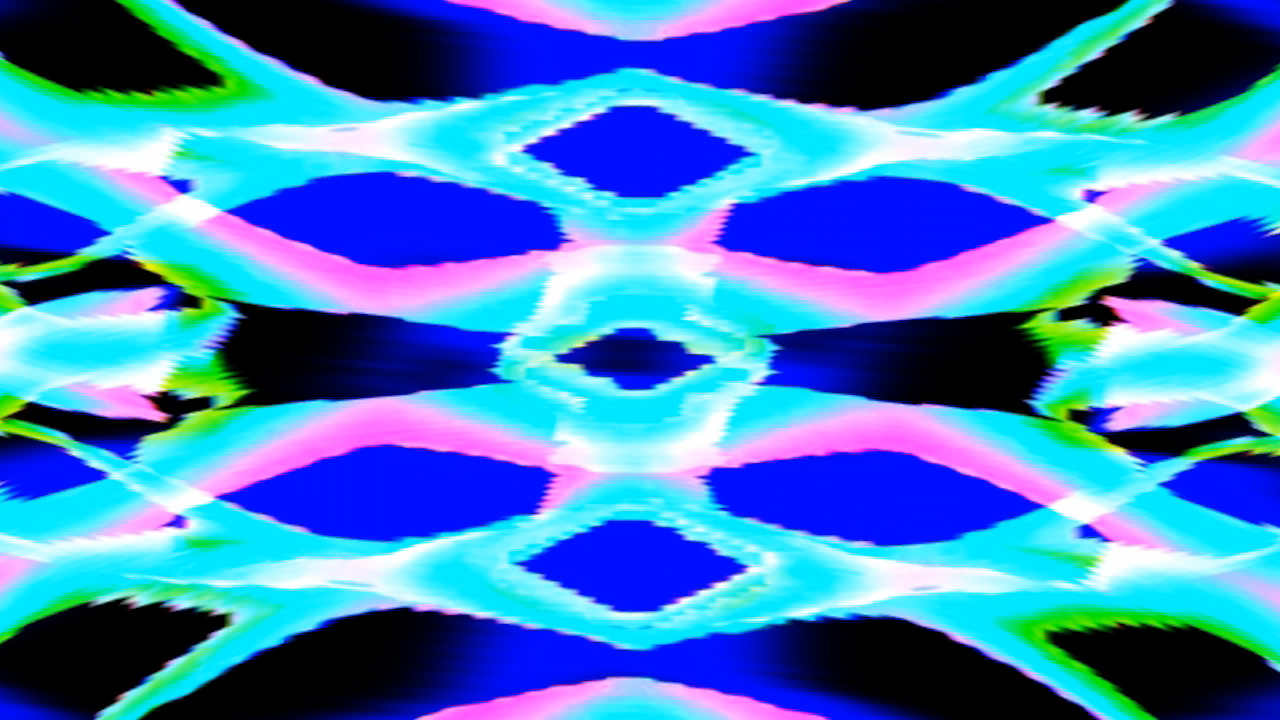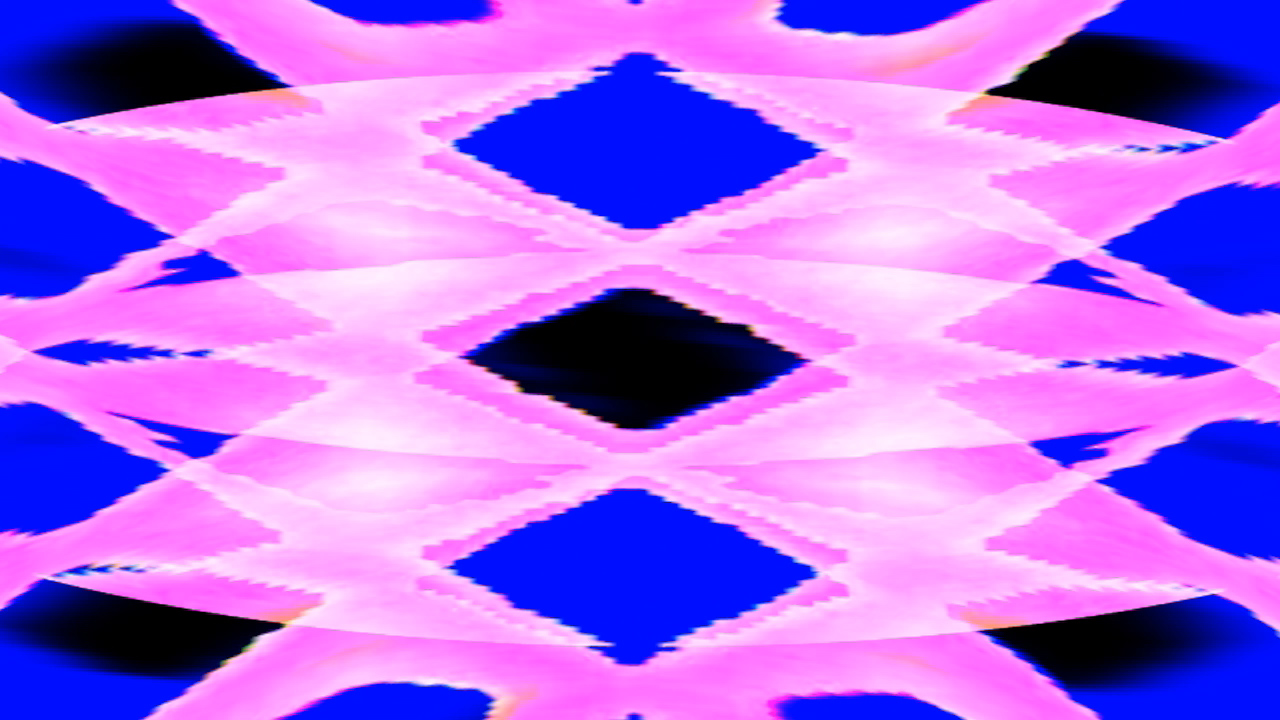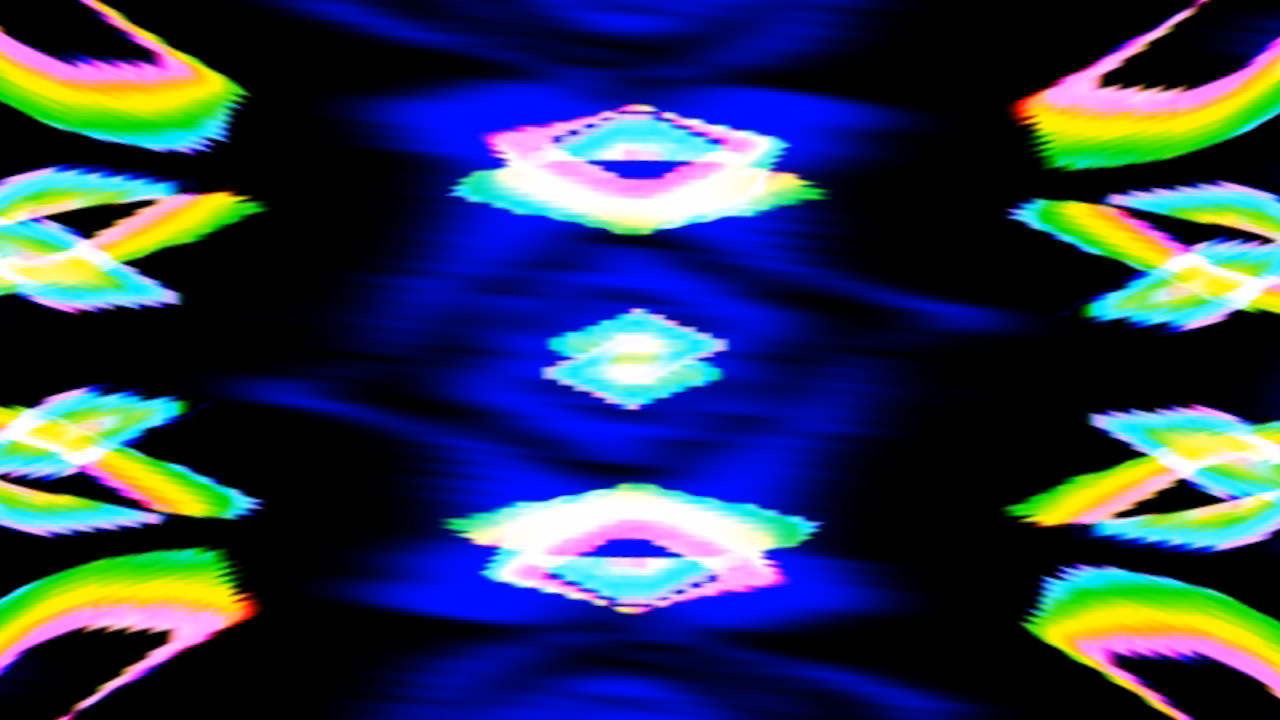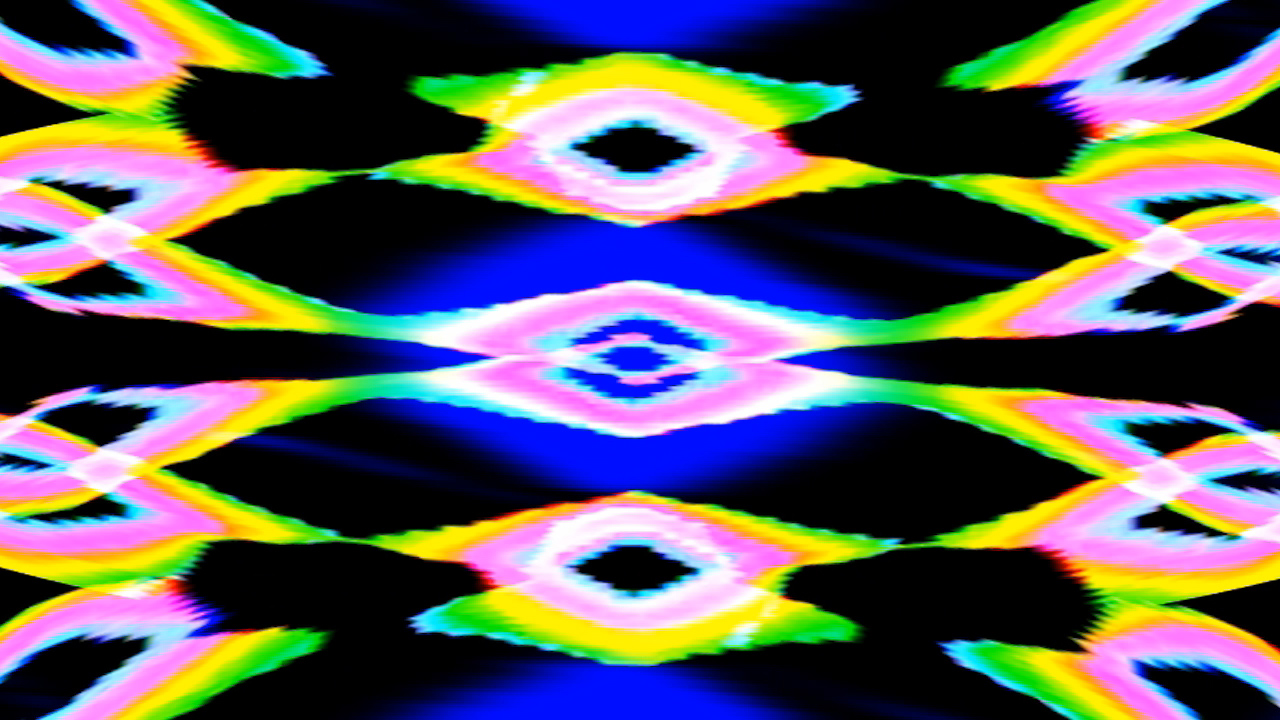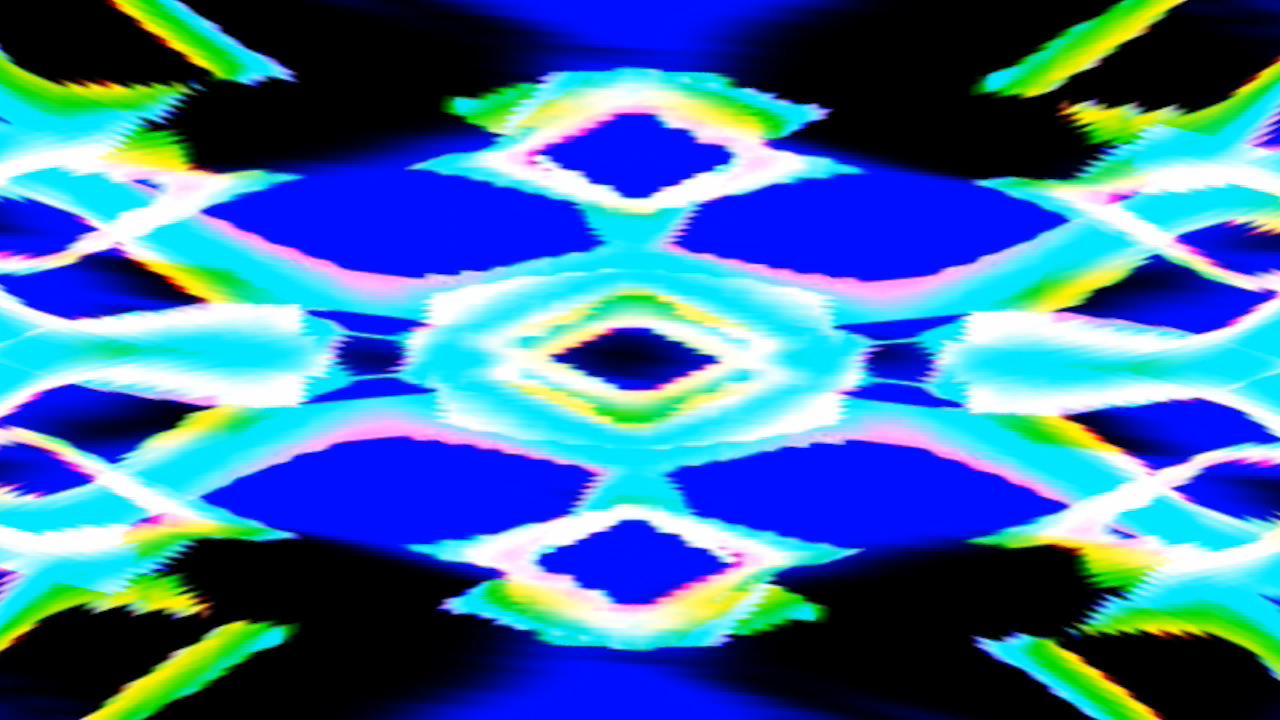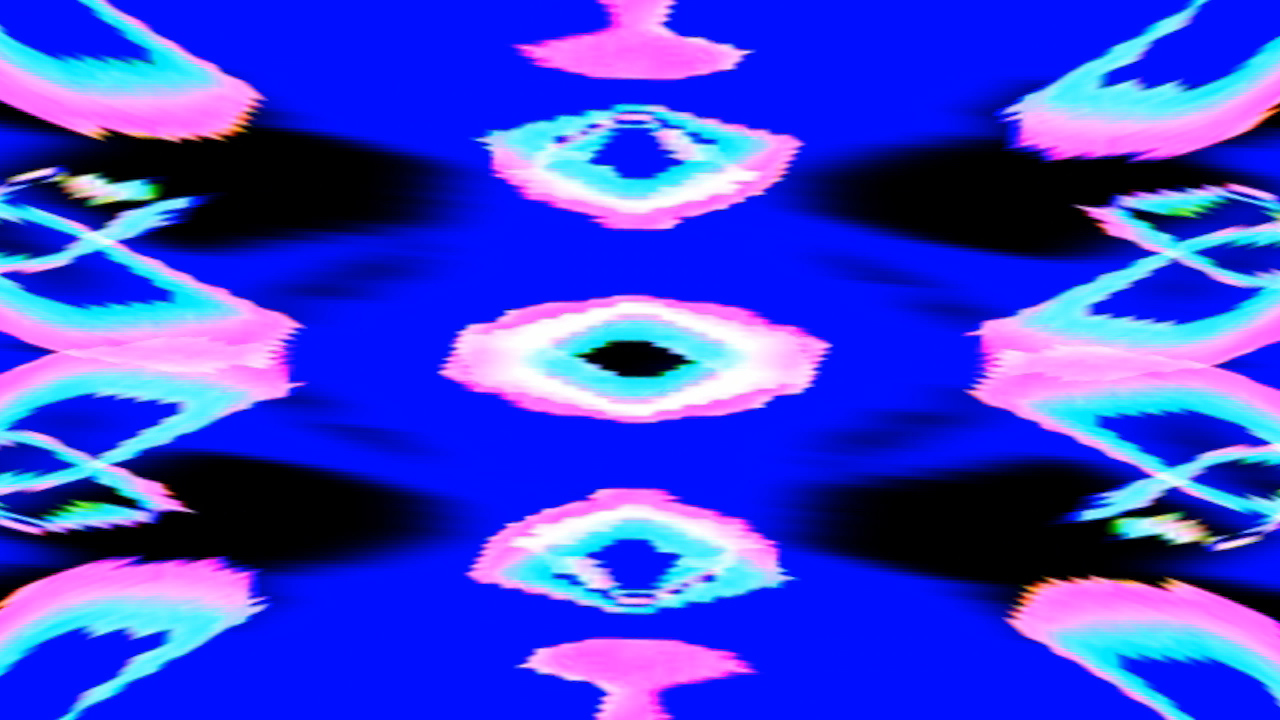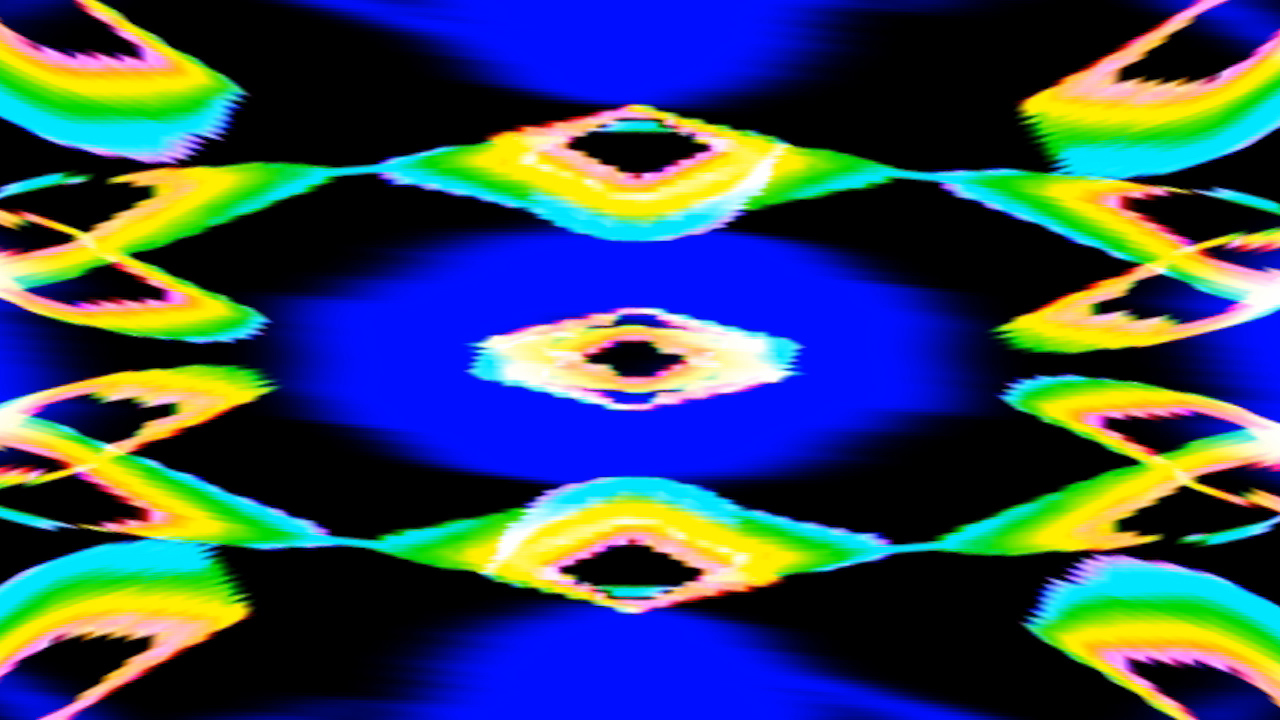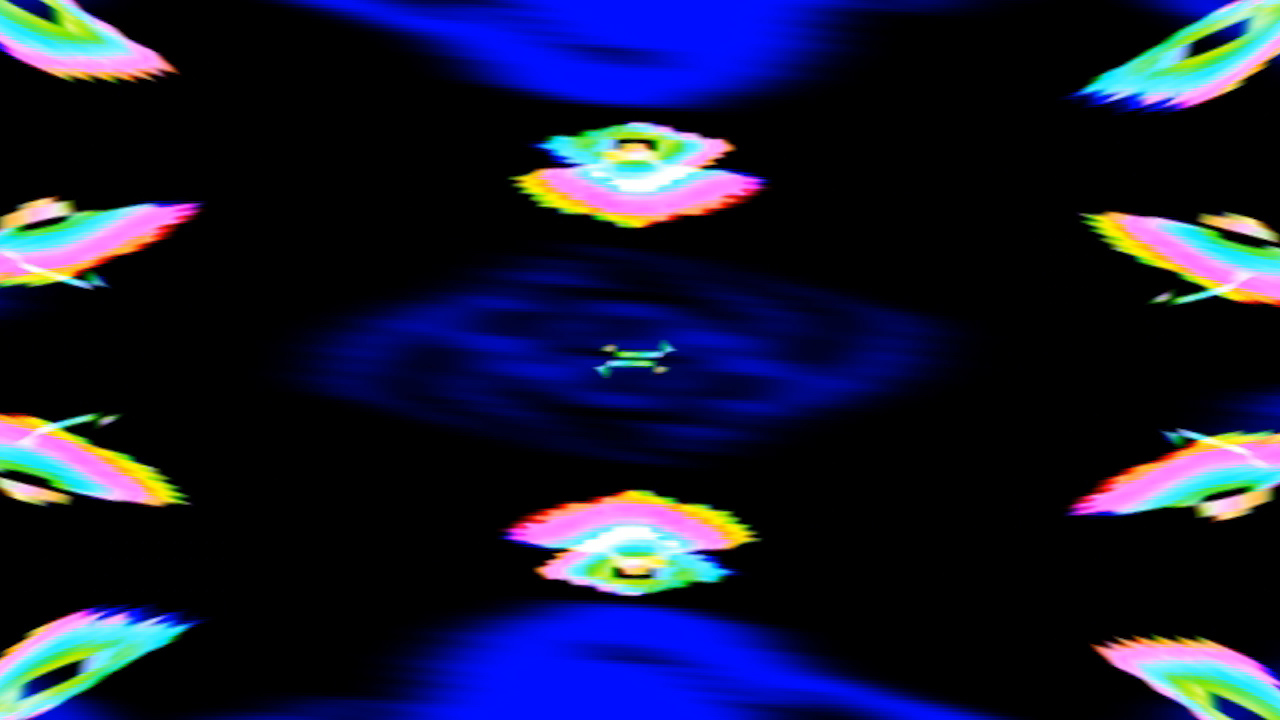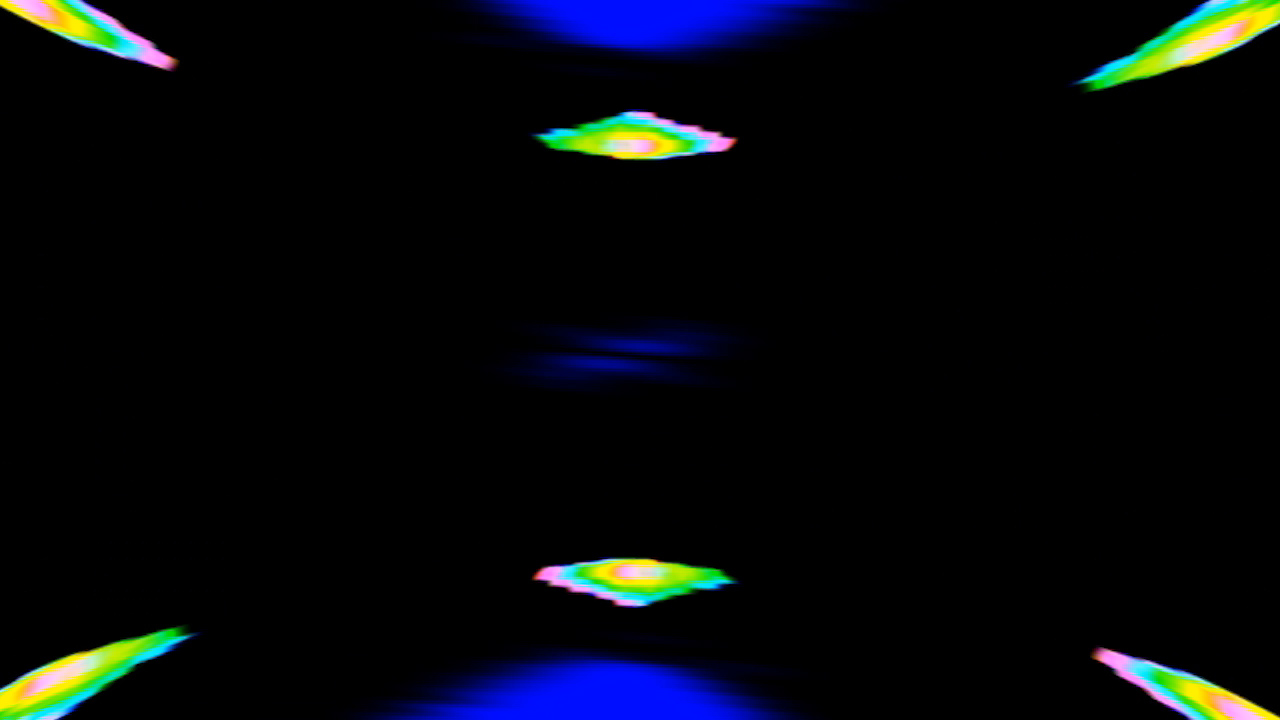The Mask (1961) Visual Podcast HD Excerpts + Related Links
As I stated in the Editor’s Blog at KQEK.com, I felt the two pre-screening intros excerpted in the podcast that accompanies the review of KINO’s The Mask (1961) 3D Blu-ray and DVD needed a bit of oomph, and the fact Julian Roffman’s film was in anaglyph 3D gave me an excuse to draft up some trippy supporting images for the visual podcast on KQEK.com’s YouTube channel:
The first intro, recorded using an older Sony digital recorder with terrible compression, mandated something grubby, so I used an oscilloscope to generate the pulsing patterns as TIFF’s two curators discuss the intricacies of 3D and the fragility of their rare 35mm print, screened only once before a restoration effort.
An oscilloscope has two channels, A and B, which you can send stereo audio and watch the two channels pulse on the screen, but the 2012 intro was recorded in mono, so to create a larger pulsing image, I converted the recording to 2 channels (stereo), cranked up one channel with massive distortion, and essentially overlaid the clean mono sound over the dirty mono sound so there’s a bit more action on the oscilloscope’s screen.
Footage was shot with a miniDV camera, and captured with Adobe Premiere, after which it was colorized, layered, and composited. The images below show the original image from one frame (note tube’s permanent graticule grid that’s visible), then coloured red, then layered with other coloured variants to create a pulsing kaleidoscope:
The 2015 intro (which sets up both the film’s restoration as well as the book launch of The Canadian Horror Film: Terror of the Soul, to which I contributed a chapter on the 1977 CanCon forest slasher Rituals / aka The Creeper), is both in stereo and much cleaner; that audio was fed straight into a vintage 1976 Atari Video Music C-240, a short-lived video synthesizer that generated assorted geo-patterns.
Note: in the excerpt, the Atari footage begins at 2:09 minutes.
The Atari gizmo didn’t flop upon release, but it didn’t exactly take off, and yet it produces some unique patterns and colours that alternate, depending on the buttons pressed and volume levels of each audio track (left and right). You basically plug audio into the rear RCA jacks, and it spits out the video via an RF signal that you connect to an old CRT television using a RF coax cable – a TV connection no one uses today.
I don’t like modifying vintage gear – most of these gizmos are unique, and given I know zilch about hacking machines, I leave them alone, beyond sending them to a shop for re-capping – but the only way to capture the video feed with sync audio was quite complicated:
First, split audio from digital player to Atari; Atari RF to JVC VCR coax in; JVC VCR coax out to a Showtime Video Ventures ‘Show Producer System Amplifer’ (basically a rudimentary A/V amp); and split audio from digital player to Showtime Amp so the audio and video maintain sync.
I used the amp to boost colours and sound, and sent the RCA video and stereo audio out to a Sony GV-D1000, and via firewire to Premiere.
Because the Atari outputs only RF video, it’s a fairly dirty picture, which is why I use Premiere’s filters to play with contrast and brightness and make blacks truly black, and colours stable.
Also: as you can see in this sample from the edit timeline, there are many cuts in the nested footage – 132 to be exact – because you only see patterns when someone speaks. Any noise between voice – coughs, stirring, etc. – also make the Atari create globs of material, but it’s like particle noise, so that rubbish needs to be cut out, leaving just clean black between each voice-generated pattern.
The way the Atari works is you send it audio, and use knobs to adjust the patterns (solid / hollow), amount of patterns on one row, and amount of rows. You can also shift the phase of the colours, and the dynamics of the patterns and colours are controlled by the volume levels of each channel. In a way it’s a very basic machine, but for its time, it offered a surprising variety of options for essential two patterns. There’s also an Auto All button that generates random hollow / solid and rows of patterns.
What was recorded by Premiere were live variations of patterns done by adjusting knobs and pressing buttons at key pauses during the recording intro.
These are consecutive 19 frames of patterns (less than a second), demonstrating the variety of material you can create from one pattern, after layering and assorted tweaks in Premiere:
The idea was to make the patterns creep from the peripherals and assault, with those amazing analogue colours that have such a distinct pastel glow. Some might find the patterns great triggers for a seizure – so avoid them, seriously – but others might find them pleasing, and zone out.
HD extracts on Vimeo:
HD extracts on YouTube:
As stated a the end of the visual podcast, although I do these images for my own work, I’m also for hire in taking audio and generating custom footage for background patterns or loops that you can use in video and film projects. For more info and inquiries, see the About + Contact page.
The next project will be visuals for an upcoming Nima Fakhrara podcast, in which the composer of The Signal (2014) discusses his latest work – the horror film The Girl in the Photographs (2015), and the interactive video game Revolution 1979: Black Friday.
Thanks for reading,
Mark R. Hasan, Editor
Big Head Amusements





